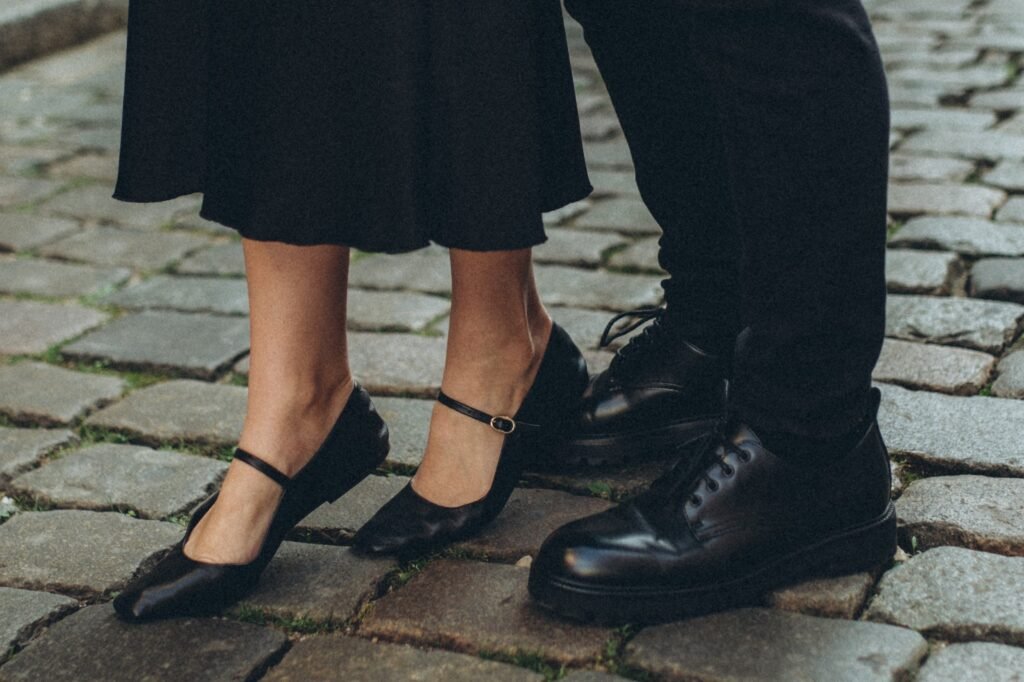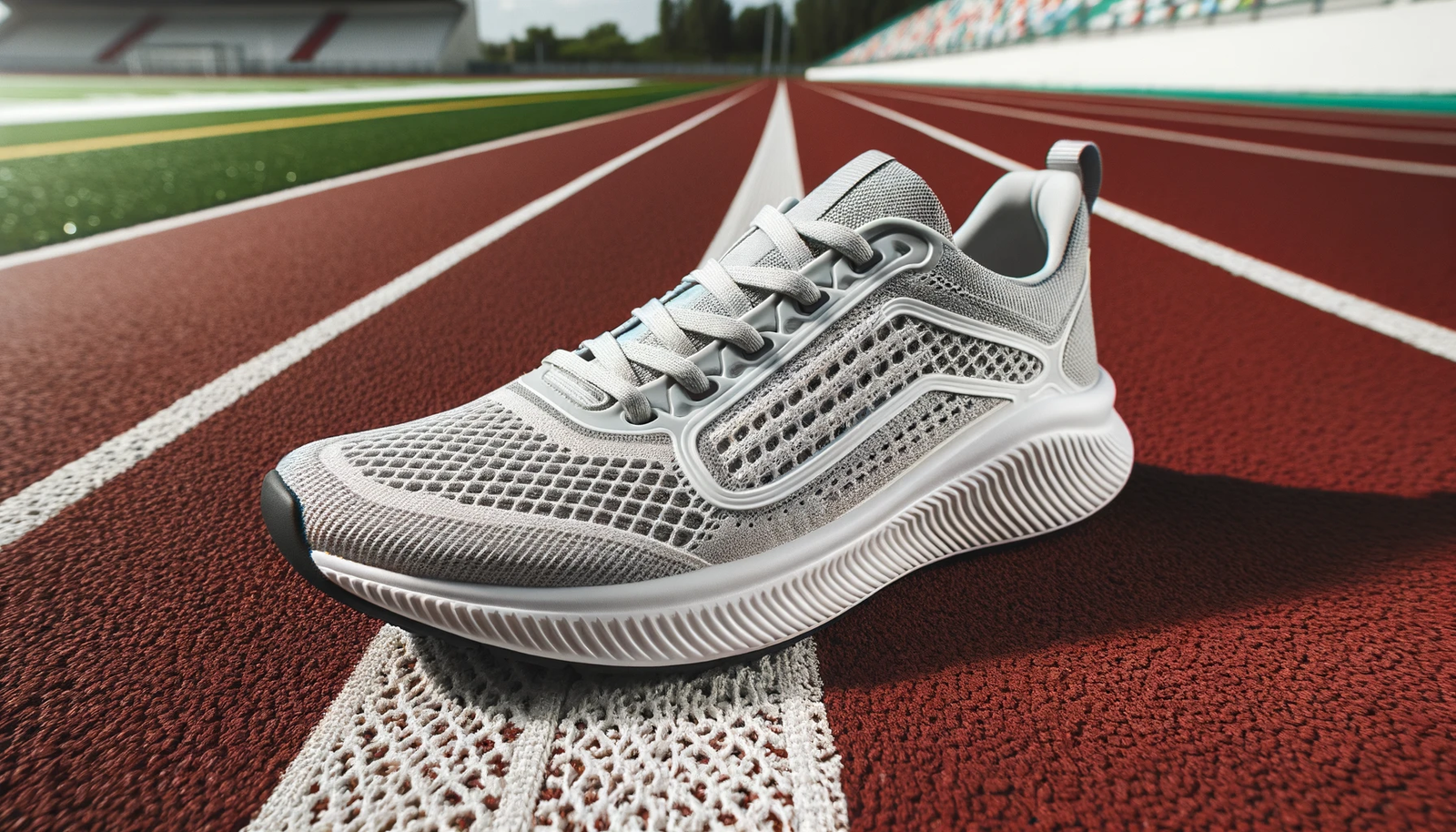Selecting the right running shoe is essential for maximizing performance and ensuring comfort during your runs. As a runner, you understand the importance of finding a shoe that aligns with your goals, running style, and foot type. Whether you prefer road running, trail running, or track running, each requires specific features for optimal support and durability. Additionally, factors such as fit, foot shape, heel-to-toe drop, and cushioning height play a crucial role in determining the right shoe for you. By carefully considering these factors and making informed choices, you can enhance your running experience and achieve your desired results.

Factors to Consider when Selecting a Running Shoe
Finding the right running shoe is crucial for both performance and comfort during your runs. There are several factors that you should consider when selecting a running shoe, including your running goals, the surface you will be running on, your foot type, and your running style. By taking these factors into account, you can ensure that you choose a shoe that is well-suited to your needs and enhances your overall running experience.
Road Running Shoes
If you primarily run on roads or other hard surfaces, road running shoes are the most suitable choice for you. These shoes are designed to provide maximum cushioning and support, which helps to absorb the impact of each footstrike and protect your joints. Additionally, road running shoes are built to withstand the repetitive motion and high mileage that comes with road running, ensuring durability and longevity.
Cushioning
One of the key features of road running shoes is their cushioning. This cushioning helps to minimize the shock and impact on your feet and legs, providing a more comfortable and smoother running experience. The level of cushioning can vary between different models and brands, so it’s essential to consider your personal preference and the amount of cushioning that feels best for you.
Support
In addition to cushioning, road running shoes provide support to help stabilize your feet and prevent excessive movement. This support is especially important if you have a tendency to overpronate (your feet roll inward) or supinate (your feet roll outward) during your run. Look for shoes with features such as arch support or medial posts that enhance stability and reduce the risk of injury.
Durability
Considering the durability of road running shoes is crucial, as they need to withstand the repetitive impact of running on hard surfaces such as concrete or asphalt. Look for shoes with durable outsoles and high-quality materials that can handle the wear and tear of road running. Additionally, it’s a good idea to check customer reviews and ratings to ensure that the shoes you are considering are known for their longevity.
Trail Running Shoes
If you prefer to run on trails or uneven terrain, trail running shoes are specifically designed to meet the challenges of off-road running. These shoes prioritize features like traction, durability, and stability to ensure a safe and enjoyable experience on rugged surfaces.
Traction
One of the most crucial considerations for trail running shoes is traction. These shoes are equipped with lugs on the outsole, which provide better grip and traction on uneven and slippery surfaces. The depth and design of the lugs can vary, so choose shoes with lugs that match the type of trails you will be running on. Deeper and more aggressive lugs are suitable for muddy or technical trails, while shorter lugs are more suitable for dry or compact trails.
Durability
Due to the rugged nature of trail running, durability is essential for trail running shoes. Look for shoes made with sturdy materials that can withstand the abrasion and impact of rocks, roots, and uneven terrain. Reinforced toe caps and protective overlays can also enhance the durability and longevity of trail running shoes.
Stability
Trail running shoes also prioritize stability to help prevent ankle rolls and provide support on uneven surfaces. Look for shoes with features like a firm midsole and a supportive upper that keep your foot secure and stable during your runs. Additionally, some trail running shoes offer additional ankle support or a higher ankle collar to further enhance stability on challenging terrain.
Track Running Shoes
If you are involved in track running, whether for sprints or long-distance events, track running shoes are designed to maximize your performance on the track. These shoes are specifically engineered to be lightweight and have a minimalist design to optimize your speed and agility on the track.
Lightweight
When it comes to track running shoes, weight is a crucial factor to consider. Lightweight shoes minimize any extra weight that could slow you down and hinder your performance. Look for shoes made with lightweight materials such as mesh uppers and lightweight cushioning to ensure a light and nimble feel.
Minimalist design
Track running shoes often have a minimalist design, focusing on providing a low-profile and responsive feel. This design allows for better ground feel, quick turnover, and efficient energy transfer. Look for shoes with a low heel-to-toe drop and minimal cushioning to optimize your performance on the track.

Importance of Fit
Regardless of the type of running shoe you choose, the importance of a proper fit cannot be overstated. Ill-fitting shoes can lead to discomfort, blisters, and even injuries. When selecting a running shoe, consider the following factors to ensure the best fit possible.
Trying shoes with the same socks worn during runs
To accurately assess the fit of a running shoe, it’s essential to try them on with the same type of socks that you wear during your runs. Socks can affect the fit and feel of the shoe, so it’s important to replicate the conditions you will be running in as closely as possible. This will give you a better idea of how the shoes will perform during your actual runs.
Consideration of foot type
Your foot type plays a significant role in determining the type of running shoe that will provide the best fit and support. There are three main foot types: neutral, overpronation (feet roll inward), and supination (feet roll outward). Understanding your foot type will help you select shoes with the appropriate level of arch support and stability features to accommodate your specific needs.
Consideration of different foot shapes
In addition to foot type, the shape of your foot can also impact the fit of a running shoe. Some people have narrow feet, while others have wide feet. Some have high arches, while others have flat feet. Different shoe brands and models cater to different foot shapes, so it’s important to find a shoe that accommodates your specific foot shape comfortably.
Factors to Consider in Shoe Design
Apart from fit, there are specific design elements of running shoes that can greatly impact your running experience and performance. Two important factors to consider are the heel-to-toe drop and the cushioning height.
Heel-to-toe drop
The heel-to-toe drop, also known as the offset, refers to the height difference between the heel and the forefoot of a shoe. A higher heel-to-toe drop encourages heel striking, while a lower drop promotes a midfoot or forefoot strike. The choice of heel-to-toe drop largely depends on your running style and personal preference. It’s important to note that transitioning between different heel-to-toe drops should be done gradually to avoid potential injuries or discomfort.
Cushioning height
The cushioning height refers to the thickness of the midsole under the heel and forefoot. Different shoes offer varying levels of cushioning, ranging from minimal to maximal. The amount of cushioning you prefer depends on factors such as your running goals, the surface you run on, your weight, and your personal comfort preferences. More cushioning is generally desirable for longer distances or when running on harder surfaces, while minimal cushioning may be preferred for a more responsive and natural feel.

Influence of Running Style
Your running style, or the way your foot strikes the ground while running, can greatly influence the type of running shoe that is most suitable for you. Understanding your running style can help you select a shoe that provides optimal support and minimizes the risk of injury.
Toe pointed out
If you tend to run with your toes pointed outwards, you may need a shoe with additional stability features to help counteract the natural tendency for your feet to roll. Look for shoes with reinforced medial areas or additional arch support to help keep your feet aligned and minimize the risk of overpronation.
Heel striker
If you are a heel striker, meaning your heel is the first part of your foot to make contact with the ground, you may benefit from a shoe with extra cushioning in the heel area. This helps to absorb the impact of each footstrike and reduce the stress on your joints. Look for shoes with ample heel cushioning to provide the necessary shock absorption and support for your running style.
Midfoot or forefoot runner
If you are a midfoot or forefoot runner, meaning you land on the middle or front part of your foot, you may prefer shoes with a lower heel-to-toe drop and less cushioning in the heel. This type of shoe allows for a more natural and efficient running stride, enabling a smoother transition from landing to pushing off. Look for shoes with a lower heel-to-toe drop and a more responsive feel to enhance your midfoot or forefoot running style.
Trade-offs between Weight and Cushioning
When selecting a running shoe, there is often a trade-off between weight and cushioning. Lightweight shoes provide a more responsive and nimble feel, allowing for faster and more efficient running. On the other hand, shoes with more cushioning provide enhanced shock absorption and comfort, especially during longer runs or on harder surfaces. It’s important to find the right balance between weight and cushioning that aligns with your running goals and personal preferences.
Consideration of weight and cushioning
If you prioritize speed and agility, opting for a lightweight shoe with minimal cushioning may be the best choice. These shoes allow for a more natural and efficient running stride, helping you run faster and with less effort. However, it’s essential to consider your personal comfort and the demands of your running activities. If you plan to run longer distances or on harder surfaces, you may need shoes with more cushioning to provide the necessary support and protection.
In conclusion, selecting the right running shoe involves considering various factors such as running goals, running surface, foot type, running style, fit, and shoe design. By understanding your specific needs and preferences, you can make an informed decision that enhances your running experience and performance. Remember to prioritize fit and comfort, as these factors play a crucial role in preventing discomfort and reducing the risk of injuries. With the right running shoe, you can enjoy your runs to the fullest and achieve your running goals with confidence.


